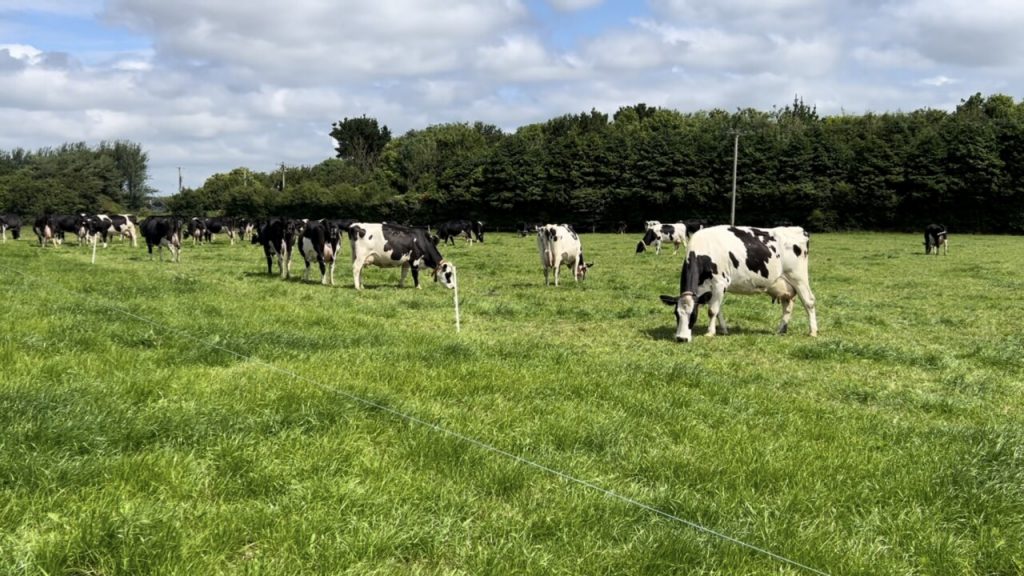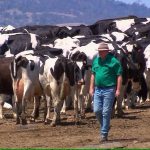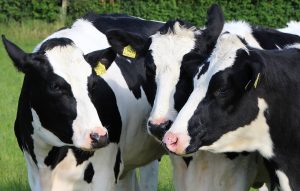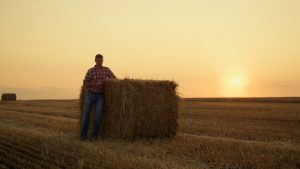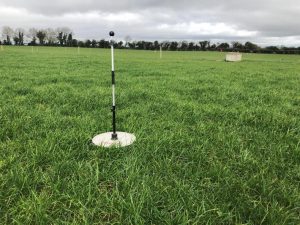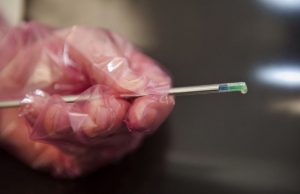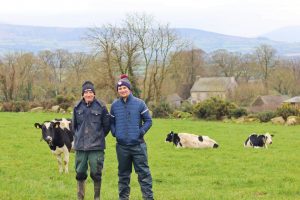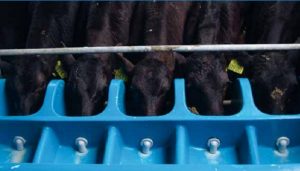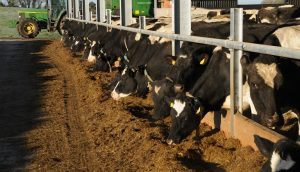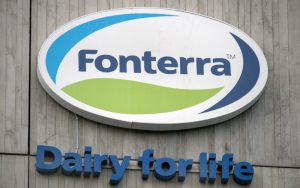
At the Teagasc open day in Johnstown castle, Co. Wexford, attendees got a chance to learn about the sustainable winter milk herd that were producing milk in an efficient and cost-effective way.
The herd consists of 90 autumn-calving holstein friesian cows and 50 spring calving cows, with no cows being recycled between seasons.
The early winter calving cows calve from the mid-September onwards, meaning they have been dried off in the last week.
The farm manager, Aiden Lawless told Agriland that these early calving cows will be let out to grass post-calving prior to being housed for the winter, as there is a strong emphasis placed on the amount of grazed pasture in the cow’s diet.
For a winter-milk herd, “it is all about keeping costs down as much as possible in a high input system”, Lawless said.
Sustainable winter-milk herd
The 90 winter milking cows have an economic breeding index (EBI) of €225, with a calving interval of 370 days and a six-week calving rate of 78%.
The herds breeding criteria is breeding for a highly functional cow that’s positive for milk kgs with a high fertility of over €100 and high milk solids over 35kg.
Over the last five years, the herd has averaged 7,540kg of milk, consisting of 3.66% protein and 4.52% fat, which accumulates to 616kg/milk solids with 1,600kg of concentrate supplement.
There is a strict 10-week breeding season on the farm that starts on December 12. This ensures that the herd has an optimal calving pattern.
It will maintain a high feed efficiency, reduce annual feed costs and minimise the amount of surplus milk going to contract milk sold from November to February.

Studies have shown that the top 10% of winter milk producers are on par or better compared to the top 10% of spring producers in terms of profitability.
Lawless said that “one of the keys to this is to make sure that the output is high as well as the input costs”, with the type of cow being important.
“A cow with a high milk solids percentage can make sure that the farmer is getting their double bonus,” Lawless claimed.
In Johnstown Castle, the winter milk bonus is worth somewhere in the region of 4c/L when averaged over total annual supply, with the milk solids payment above the base price is worth around another 8c/L.
Regardless of winter milk contracts, on the majority of farms, most of the milk will probably be sold on A+B-C, so good milk solids is important.
Pasture management
The turnout date for the cows in the spring is February 1 or the earliest weather window. On/off grazing will be done throughout the spring if needs be in order to reach their grazing targets.
Short grazing bouts when needed of about two to three hours after milking, with winter forages adjusted in the diet according to grass supply but removed as soon as possible.
Summer pre-grazing yields are 1400-1600kh DM/ha, ideally. There was a total of 13t DM/ha utilised in 2023 for the autumn herd, with 10.7t grazed and 2.3t cut for silage.
A principle aim for the winter milk project in Johnstown Castle has been to develop such grazing guidelines for winter milk herds.

The spring rotation planner, summer grass wedge, and autumn grass budget provide an appropriate framework for pasture management, which are subject to some adjustments of specific targets.
Within this framework, the key challenges to be met for this winter-milk herd are as follows:
- Meeting high spring feed demand;
- Maintaining pasture quality in mid-season;
- Achieving the correct peak farm grass cover in autumn;
- Concentrate feeding strategies for split-calving herds at grass.
Lawless told Agriland: “The main drivers are the right type of cow, grazing the right type of grass for as long as possible & when indoors being fed a suitable indoor diet.”
In the autumn, the farm maximises the pasture in the cow’s diet, while complimenting with a high energy nut and a crude protein concentrate of 15%, as freshly calved cows can struggle on heavy autumn covers.
Lawless spoke about the power of that grass in the autumn, saying: “We are happy not to build heavy covers in the autumn – targeting around 900kg DM/ha average farm cover at peak, this ensures good quality grass for the freshly calved cow.”
It means that the cows are housed by night towards the end of October, but will be milking out of the shed for the rest of the winter.
“A week or two earlier housing is a small price to pay if we can get out to grass in early February when the energy in the grass is higher and the cows need it more,” Lawless added.
The chemical nitrogen (N) usage was minimal in 2023, with 174kg chemical N/ha spread. This was put down to an array of factors from the use of multi-specie swards and clover incorporation to effective grassland management and slurry application.
The message on the day was that grazed pasture drives margins in winter-milk systems and this is done through setting realistic grazing targets for each time of the year.
You can now read the most important #news on #eDairyNews #Whatsapp channels!!!
🇺🇸 eDairy News INGLÊS: https://whatsapp.com/channel/0029VaKsjzGDTkJyIN6hcP1K
